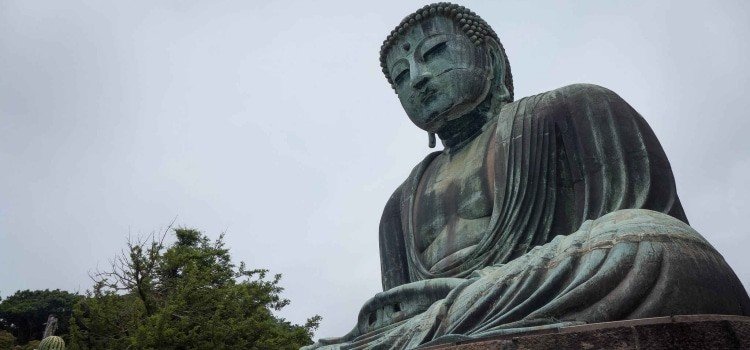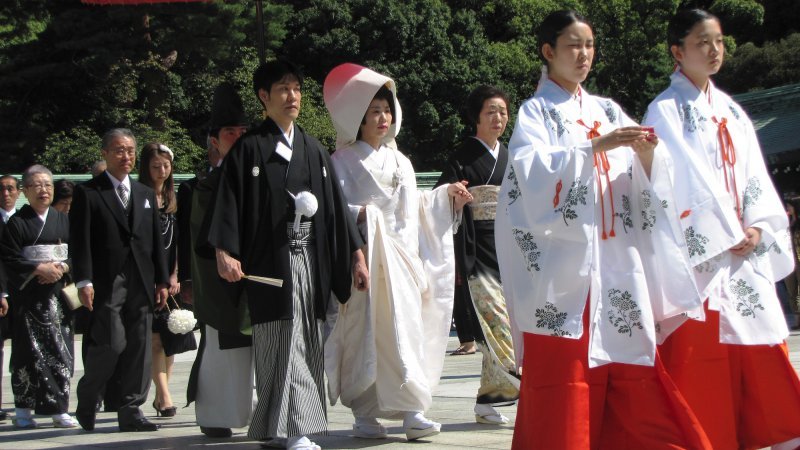Religious freedom in Japan is guaranteed by the Constitution and is widely respected in society. Unlike countries where the government interferes in religious practices, Japan adopts a stance of separation between religion and state, allowing its citizens to practice any faith without restrictions.
Despite this freedom, religiosity in Japan has unique characteristics. Many people do not follow a single religion, but rather a combination of Shinto, Buddhist traditions, and even Western influences. Furthermore, there are challenges, such as discrimination against new religions and the impact of controversial cults.
We recommend reading: What are the religions of Japan?
Table of Content
The Japanese Constitution and Religious Freedom
Article 20 of the Constitution of Japan (promulgated in 1947) states that:
- Everyone has the right to freedom of religion.
- The government cannot grant privileges to any specific religion.
- No religion can exercise political authority.
This means that Japan does not have an official religion and the State does not interfere in individual beliefs. Unlike the period before World War II, when state Shinto was promoted as part of Japanese nationalism, today there is a clear separation between religion and government.
How Religions Operate in Japan?
Japan has a significant religious diversity, with an emphasis on three major traditions:
1. Shintoísmo
Shinto is the native religion of Japan and is deeply connected to the national culture. Although many people participate in Shinto rituals, such as visiting shrines and celebrating festivals, few consider themselves "exclusive" followers of Shinto.
2. Buddhism
Buddhism arrived in Japan in the 6th century and still has a great influence, especially in funeral rituals. Most Japanese families maintain a Buddhist altar at home to honor their ancestors.
3. Christianity and Other Religions
Christianity represents a minority, with about 1% of the population identifying as Christian. In addition, there are new religions, such as Soka Gakkai (a branch of Buddhism) and groups inspired by Shinto-Buddhist beliefs.

Japan vs. China - Religious Freedom
Japan and China are often confused as similar countries, but they are completely different. Although China claims to have freedom of belief, things are very different from Japan; only 5 religions are officially recognized, and any others are illegal and prohibited.
To understand more about how this religious persecution and lack of freedom affect believers in China, read our article about: Is there religious freedom in China?
If you are curious about South Korea and North Korea, we have the article: Is there Religious Freedom in Korea?
Restrictions and Challenges to Religious Freedom
Despite the freedom guaranteed by law, some religions face difficulties in Japan:
Discrimination Against New Religions
New religious groups, such as Soka Gakkai and Seicho-No-Ie, are often viewed with suspicion by society. Some people believe that these groups are closed sects and avoid interacting with their members.
2. Cults and the Aum Shinrikyo Case
Religious freedom was questioned after the sarin gas attack on the Tokyo subway in 1995, carried out by the Aum Shinrikyo cult. Since then, the government has been monitoring religious groups deemed extremist, and the population has become more skeptical of new religions.
3. Social Pressure
Although Japan is religiously free, there is a social pressure to follow certain rituals, such as Shinto-style weddings and Buddhist ceremonies at funerals. People who completely reject religion may be seen as different.

Wrapping Up
Japan has full religious freedom, with laws that guarantee the separation between religion and state. However, there are social and historical challenges that affect how certain religions are perceived. Overall, Japan stands out as a country where diverse beliefs coexist peacefully, with a flexible and culturally integrated approach to religiosity.
